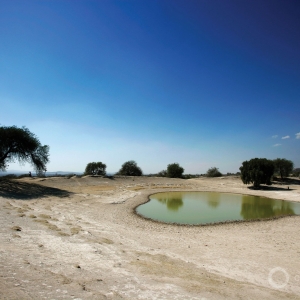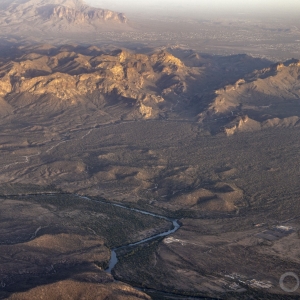This week’s episode of What’s Up With Water covers extreme heat and drought across Europe. Plus, Circle of Blue reports on the aftermath of catastrophic flooding in some of the poorest counties in the United States.
Transcript
Welcome to “What’s Up With Water” – your need-to-know news of the world’s water from Circle of Blue. I’m Eileen Wray-McCann.
In Europe, countries continue to endure an extremely hot and dry summer. Another heat wave is pressing across the continent, influenced by climate change. The impacts are widespread. In southwestern France, a massive wildfire forced more than 10,000 people to flee their homes, according to Reuters news service. Temperatures over 100 degrees Fahrenheit have made the region a tinderbox.
In Germany, transport authorities are monitoring the Rhine River as water levels drop to critical levels. The AP reports that the key waterway could soon be too low to move most cargo. Conditions are not quite as extreme as in 2018, when the river reached a record low. But the Rhine is currently so depleted that large ships carrying salt, coal, gasoline and other goods must drastically reduce their loads to avoid running aground. The cargo restrictions are another blow to a continent already trying to manage an energy crisis due to Russia’s invasion of Ukraine.
And in Great Britain, officials who are considering an emergency drought declaration will not have a backup water supply at the ready. A major desalination plant in London said it will be at least another year before it will supply drinking water to residents. The Guardian reports that the Thames Water Plant opened in 2010, intending to provide drinking water for up to 1 million people during water shortages. Now, the company says it has scaled back the plant’s estimated capacity by a third, and that it will take more work before it can begin operating.
As Europe suffers a lack of water, a weather calamity of an opposing nature has afflicted mountainous regions of the American Southeast. This week, Circle of Blue reports on what flooding in Kentucky means for its poorest residents.
At the end of July, catastrophic downpours killed dozens of people in Eastern Kentucky, after a powerful storm system passed through some of the poorest counties in the United States.
Scott McReynolds lives in the town of Krypton. He says that calling the rising waters historic would be an understatement. The Appalachian foothills near his home became high-velocity funnels, sending violent torrents into areas that had never flooded before. In the dead of night, residents were forced to make a harrowing choice: try to ride out the storm at home or brave the violent waters to escape to higher ground. In desperation, one mother bound herself to her children using the cord of a vacuum cleaner as waters swept their trailer down river. The floods took the lives of thirty-seven people, three of them young children.
This part of Kentucky is already beset with poverty, and the path of recovery is almost as daunting as the floods. The hardest-hit counties—Clay, Knott, Letcher, and Perry—have a median annual income that’s about 40 percent lower than the national average. About a quarter of residents live below the poverty line. In some census tracts, over half the housing units are mobile homes. In Eastern Kentucky, as in many of America’s poorest communities, poverty and flood risk are two halves of a brutal cycle: low-income people are more likely to be located in flood zones, and less likely to access relief funds for repairing the damage. McReynolds has worked as an affordable housing developer in the area since the early 1990s, and he’s watched this story unfold from the front lines. He said “Our region has been a persistent poverty region for as long as they’ve tracked poverty statistics. One of the effects of that is that we have more than our fair share of really bad housing. It’s not surprising that a lot of those got flooded.”
Many of the flood victims will be applying for government aid, but the housing assistance funds available are no match for the demand, both in Kentucky and nationwide. Only about one in four U.S. residents who are eligible for federal rental assistance receives it. Families wait an average of two and a half years to receive housing vouchers. With limited resources at his disposal, McReynolds must make heartbreaking choices: should he help two people in extreme poverty, or five who are only considered “very low income”?
In times of disaster, this chronic deficit becomes a crisis. Many trailer parks are built on cheap and risky land, so it’s not surprising that they bore the brunt of the flood damages, both this year and last. It’s in keeping with nationwide trends. Analysts at Headwaters Economics found that one in seven mobile homes are built in an area with high flood risk, compared to one in 10 for all other housing types. State officials say the floods have left hundreds of Kentuckians homeless.
After dealing with the initial trauma, low-income flood victims may face additional challenges during the many steps of the recovery process. Mobile home owners face obstacles in getting access to federal and state assistance. Homeowner verification is difficult for inherited properties that lack proper documentation. Stigma and confusion around whether trailer parks qualify for disaster assistance can also interfere with getting help. Because mobile home residents lack the same legal protections as renters, evictions from mobile home parks are significantly higher after disasters. Most often, renters have no option but to rebuild in the same vulnerable location. Said McReynolds “It really comes down to limited means: an older mobile home is sometimes the only thing people can afford. Folks wind up fixing up their mobile home if they can, and staying in the floodplain. This is an economic reality. It’s that or homelessness.”
Global climate change is only accelerating this cycle. Downpours are getting more intense, and have caused more flash flooding that spreads outside river floodplains, so previous flood risk maps don’t help much anymore. The eastern U.S. is seeing a steep increase in the number of extreme rain events, and the trend is expected to continue as the planet warms further. McReynolds said that the climate outlook underlines the need to pursue development options that lower flood risk. He said “How do we begin to get the state and federal resources that we need, at the level we need, in order to address the folks who are really vulnerable? We can’t just keep putting people back in the floodplain.”
And that’s “What’s Up With Water” from Circle of Blue, where water speaks. More water news and analysis await you at circleofblue.org. This is Eileen Wray-McCann – thanks for being here.
Eileen Wray-McCann is a writer, director and narrator who co-founded Circle of Blue. During her 13 years at Interlochen Public Radio, a National Public Radio affiliate in Northern Michigan, Eileen produced and hosted regional and national programming. She’s won Telly Awards for her scriptwriting and documentary work, and her work with Circle of Blue follows many years of independent multimedia journalistic projects and a life-long love of the Great Lakes. She holds a BA and MA radio and television from the University of Detroit. Eileen is currently moonlighting as an audio archivist and enjoys traveling through time via sound.






 © J. Carl Ganter / Circle of Blue
© J. Carl Ganter / Circle of Blue